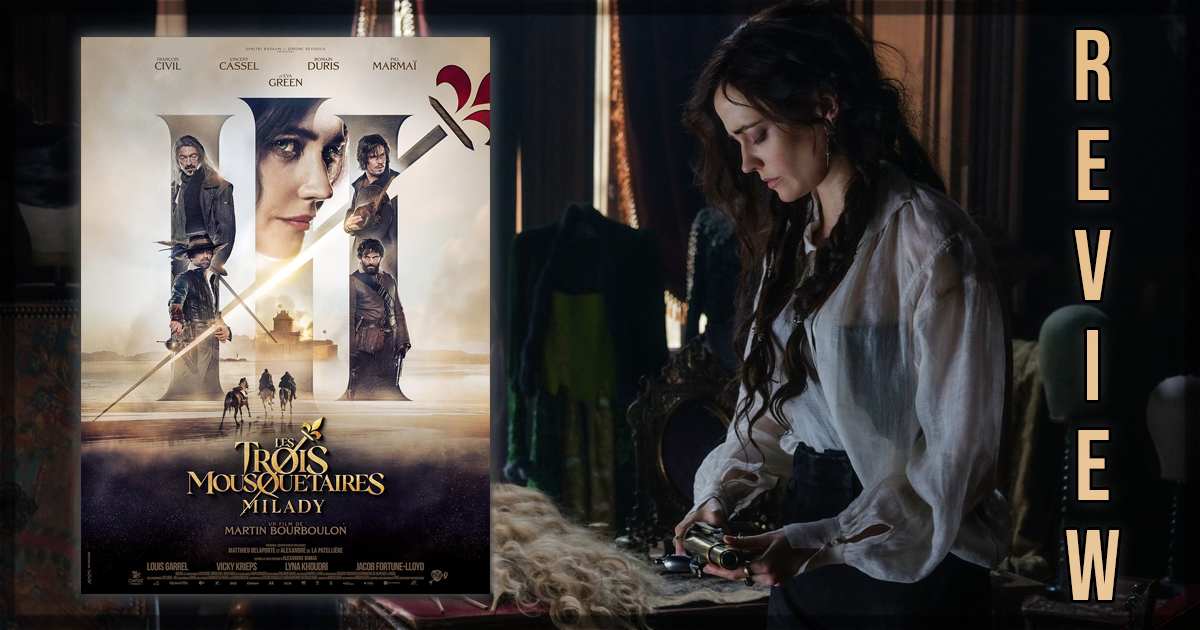Alexandre Dumas’ The Three Musketeers has gone through many permutations, but Martin Bourboulon’s two-parter, which has allowed France to direct a just – and realist – adaptation of Dumas’ tale, is one of the very best modern book-to-film iterations we’ve seen in ages. And its first installment, D’Artagnan, is also the best part one of the year. That’s right, even better than Spider-Man: Across the Spider-Verse, and Mission: Impossible – Dead Reckoning Part One. The Three Musketeers – Part Two: Milady is finally out in select Canadian cinemas and picks up right where the first one left off.
D’Artagnan (François Civil) is looking for his lover, Constance Bonacieux (Lyna Khoudri), who has been kidnapped by Henri de Talleyrand-Périgord, Count of Chalais (Patrick Mille), who has been conspiring with Gaston (Julien Frison) to assassinate King Louis XIII (Louis Garrel).
At the count’s palace, D’Artagnan finds Milady de Winter (Eva Green) shackled in a cell, who tells him she knows where Constance is. D’Artagnan seeks to find her, as she is the only one who knows the real conspirator behind the King’s assassination attempt. He teams up with the musketeers: Porthos (Pio Marmaï), Aramis (Romain Duris), and Athos (Vincent Cassel) to find her in time before Milady and Cardinal Richelieu (Éric Ruf) enact the latest part of their plan.
The Three Musketeers: Milady Contains Breathtaking Action
One of the best parts of Bourboulon’s modern retelling of Dumas’ tale is his approach to action. With cinematographer Nicolas Bolduc, Bourboulon stages most of The Three Musketeers’ action sequences in one take, giving incredible amounts of tension to the proceedings and the development of characters.
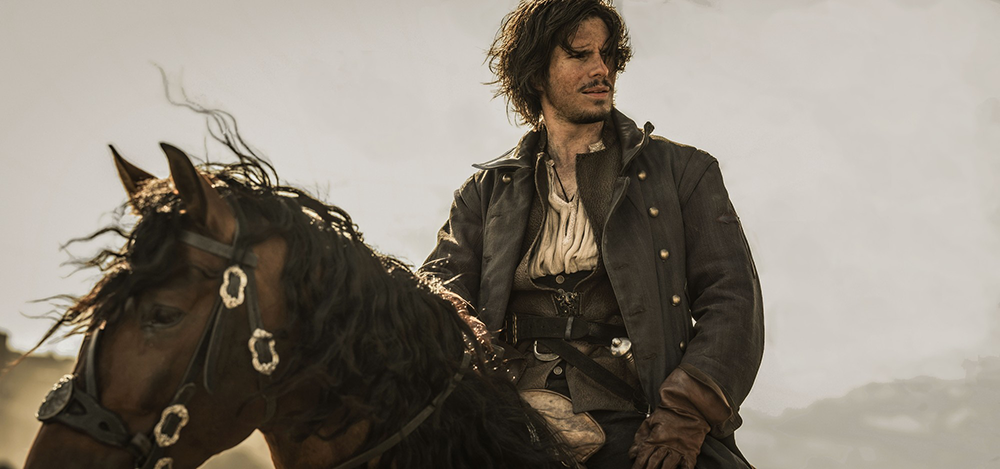
The Three Musketeers: D’Artagnan introduced audiences to D’Artagnan, Porthos, Athos, and Aramis through a oner, as they were being hunted by Cardinal Richelieu’s guards, preparing them for their arrest. The tricks to cut between takes are obvious, but the result of that “one take” is as effective as the ones crafted in the Extraction pictures. There’s nothing more cathartic and electrifying on the big screen than a well-constructed one-take, which The Three Musketeers uses brilliantly.
The core battle of The Three Musketeers: Milady is also staged so the camera never cuts away from the action. As tiresome as the device would be if your film only consists of oners, Bourboulon keeps reinventing his approach to the single take with each setpiece he crafts, using them only when necessary to evolve the characters within the story. When the cannons get positioned to fire into the fortress, Bourboulon cuts away from the oner and shows the cannons being set up but immediately cuts back to a one-take as soon as it explodes into a building.
Every action sequence is electrifying
There isn’t a single action sequence in The Three Musketeers: Milady isn’t cinematically electrifying, and the climax between Milady and D’Artagnan is the ultimate show-stopper. Though not a one-take, the classic barn-on-fire setting elevates the stakes to incredible heights. Its precise stuntwork makes its swashbuckling action feel less fantastical but more grounded in reality. It’s a massive departure from previous iterations of The Three Musketeers, where the main draw was the sword-on-sword action. At the same time, Bourboulon is more interested in the political aspects of the story while giving action that feels more realistic than striking. And yet, this approach works better than Richard Lester’s Three Musketeers or even Stephen Herek’s 1993 adaptation for Disney.
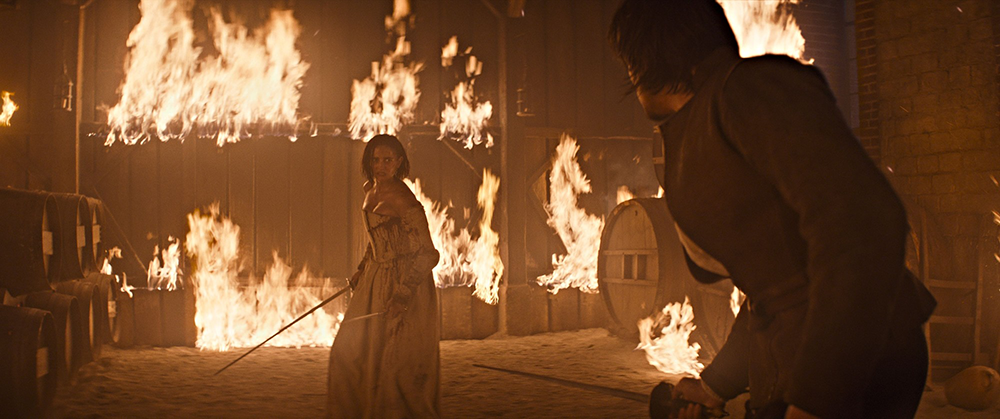
However, the political intrigue is a bit scattershot here, with many moving parts not cohesively coming together near its end, especially with so much plotting done in the first installment to get to the good stuff in part two. There’s still lots of exposition, and many of the key players that made Part One a thrilling watch, including the Queen (Vicky Krieps) and the Captain of Tréville (Marc Barbé), are completely sidelined. Beyond Milady, some antagonists are pitifully underdeveloped, including the Count of Chalais and Gaston, who share limited screen time equally.
Eva Green and François Civil Shine in The Three Musketeers: Milady
While The Three Musketeers: D’Artagnan focused on the titular character’s journey to join the Musketeers and stop the King’s assassination attempt, Milady gives more development on the film’s most mysterious character, who consistently disguises herself and fools not only the Musketeers but the Cardinal Richelieu, whom she is in cahoots with. We never really know if she can be trusted, but she does help D’Artagnan and Constance here, though one specific choice will have massive repercussions for its final moments.
As Milady, Green is the biggest standout in the picture. Some will complain that her past life isn’t necessarily explored, but that’s beside the point. We know much more about her past with just a few scenes that retroactively expand upon what the first film introduced, making her an even more complex character. She consistently chews up the screen in more ways than one, always on the edge of never knowing if she should be trusted. And yet, D’Artagnan more than once falls into her trap, giving some of the film’s best chemistry between the two.
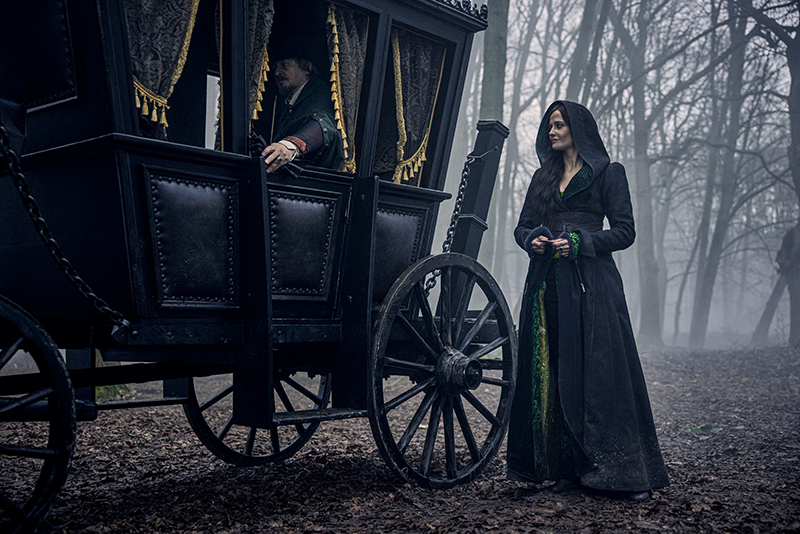
Civil also expands upon the arc he was introduced to in D’Artagnan, with the final moments between Constance and Milady a massive punch to the gut. While the first part of the series had a happy ending and a conventional three-part structure, Bourboulon elevates the stakes and isn’t afraid at subverting audience expectations. The ending may divide some people on handling some of Dumas’ material, but those who have read the book should know what’s coming.
It still hits hard, but Bourboulon doesn’t waste any time picking the spirits back up to showcase how truly iconic the Musketeers are for the collective imagination of La République Française.
Final Thoughts on The Three Musketeers: Milady
While The Three Musketeers: Milady focuses a lot more on the political aspects of Dumas’ tale than the swashbuckling action that has defined cinematic iterations of the characters, Bourboulon’s staging and enthralling performances from François Civil and Eva Green breathes new life into Alexandre Dumas and brings to a new generation of moviegoers with more contemporary viewing sensibilities. It may not be perfect, but it’s certainly better than most of its adaptations.
How to watch The Three Musketeers – Part II: Milady
The Three Musketeers: Milady is in limited theaters worldwide, with a US release scheduled for 2024.
Have you watched the movie yet? How does it compare to other adaptations? Share your thoughts by commenting below or by connecting with us on X @MoviesWeTexted.
Interested in more international films? Check out all of our reviews and coverage of international titles, including our recent review of the Oscar shortlisted French language film The Taste of Things.
You might also like…
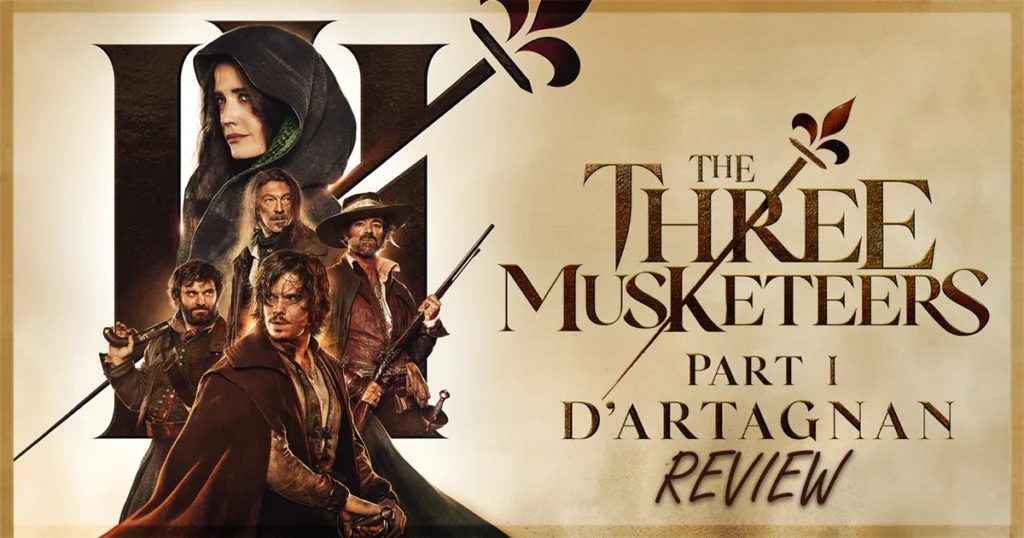
‘The Three Musketeers: D’Artagnan’ Movie Review: Swashbuckling Adventure, French Flair

